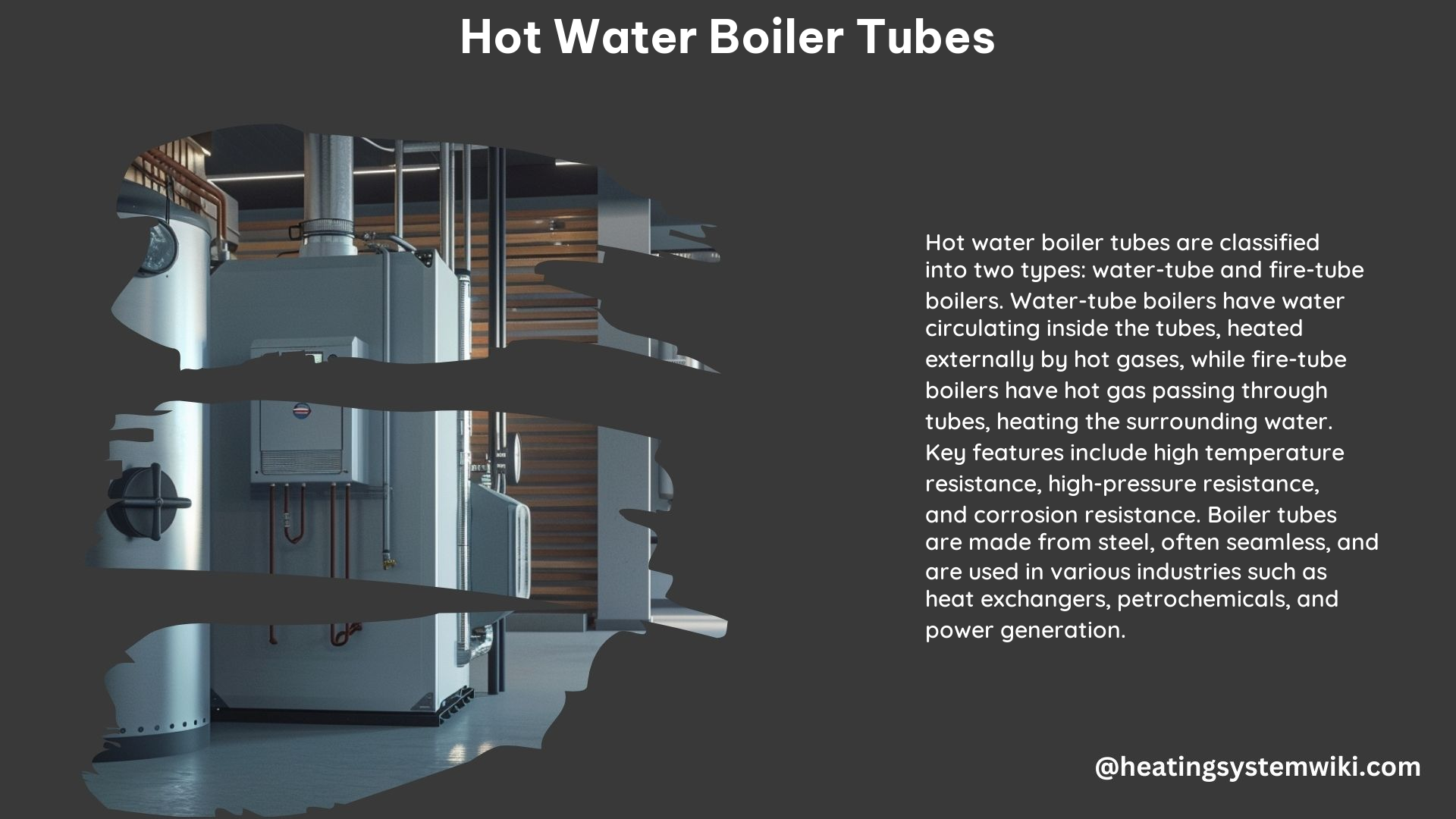Hot water boiler tubes are a critical component in boilers used for heating water and producing steam. These tubes play a vital role in the efficient and safe operation of boiler systems, ensuring reliable heat transfer and pressure containment. In this comprehensive guide, we will delve into the intricacies of hot water boiler tubes, covering their types, technical specifications, key features, quality control, and leading manufacturers in the industry.
Types of Boiler Tubes
Water-Tube Boilers
In water-tube boilers, the water circulates inside the tubes, which are heated externally by the hot gases generated by the furnace. These boilers are commonly used in high-pressure applications, such as steam turbine power generation, due to their ability to withstand higher pressures and temperatures.
The water-tube boiler design typically features a large steam drum at the top, with smaller diameter tubes running between the drum and the furnace. The water is heated as it circulates through these tubes, converting it into steam. The steam then rises to the drum, where it is separated from the water and directed to the steam distribution system.
Fire-Tube Boilers
In fire-tube boilers, the hot gas travels through one or more tubes, heating the water surrounding them by thermal conduction. These boilers are typically used for lower-pressure applications and are less common in modern high-pressure systems.
The fire-tube boiler design features a cylindrical shell with a series of tubes running through it. The hot gases from the furnace pass through these tubes, transferring heat to the water surrounding them. The heated water then circulates, producing steam that is collected in the upper part of the boiler.
Technical Specifications

Diameter of Drum in a Babcock and Wilcox Boiler
The diameter of the drum in a Babcock and Wilcox boiler, a widely used water-tube boiler design, typically ranges from 1.5 to 3.5 meters (4.9 to 11.5 feet). The drum serves as the primary steam and water separator, ensuring the efficient separation of steam from the water.
Size of Water Tubes in a Babcock and Wilcox Boiler
The size of the water tubes in a Babcock and Wilcox boiler can vary depending on the specific design and application. However, some common sizes include:
- Outside diameter: 25 mm to 100 mm (1 inch to 4 inches)
- Thickness: 2 mm to 10 mm (0.08 inch to 0.4 inch)
These dimensions are crucial in determining the boiler’s heat transfer capacity, pressure-handling capabilities, and overall efficiency.
Key Features and Requirements
High Temperature Resistance
Boiler tubes must be able to withstand high temperatures, often reaching hundreds of degrees Celsius (400°C to 600°C or 750°F to 1,100°F). The materials used in the construction of these tubes, such as carbon steel, alloy steel, or stainless steel, must have excellent thermal resistance properties to prevent premature failure or degradation.
High-Pressure Resistance
Boiler tubes must be able to handle high pressures, typically ranging from 10 to 200 bar (145 to 2,900 psi) or even higher in some industrial applications. The tube walls must be thick enough to withstand these pressures without rupturing or exploding, ensuring the safety and reliability of the boiler system.
Corrosion Resistance
Boiler tubes must be resistant to corrosion from various environments and substances, including scaling in water-tube boilers. The choice of material, surface treatments, and coatings play a crucial role in enhancing the corrosion resistance of boiler tubes, prolonging their service life and preventing premature failures.
Quality Control and Selection
Examine the Tube’s Cross-Section
A seamless boiler tube of high quality will have a smooth cross-section, free of bumps, imperfections, or irregularities. This indicates a consistent and uniform manufacturing process, ensuring the tube’s structural integrity and performance.
Determine the Boiler Tube’s Density
Avoid pipes with a low density, as they may contain contaminants or impurities that can compromise the tube’s strength and durability. A higher density typically signifies a higher-quality boiler tube.
Inspect the Boiler Tube’s Outside
A smooth, uniform surface on the outside of the boiler tube is a good indicator of its quality. Surface irregularities, such as pits, grooves, or uneven textures, may suggest manufacturing defects or potential weak points in the tube’s structure.
Suppliers and Manufacturers
Webco Industries
Webco Industries is a leading provider of seamless carbon/alloy and welded carbon tubing products for pressure tube applications, including boiler tubes. They offer a wide range of sizes and materials to meet the specific requirements of various boiler systems.
TUSPIPE
TUSPIPE is a renowned supplier of high-quality boiler tubes made from steel, suitable for a variety of applications, including heat exchangers and petrochemical industries. Their boiler tubes are designed to withstand the demanding operating conditions of modern boiler systems.
Triangle Tube
Triangle Tube is a manufacturer of quality stainless steel hot water heating equipment, including boiler tubes. Their products are known for their durability, corrosion resistance, and efficient heat transfer capabilities.
References
- CafeParts: https://cafeparts.com/Products/Hydraulic/Boiler-Tubes
- Webco Industries: https://www.webcotube.com/tubing-products/tubing-applications/boiler-tube/
- Triangle Tube: https://triangletube.com
- Wikipedia: https://en.wikipedia.org/wiki/Water-tube_boiler
- TUSPIPE: https://www.tuspipe.com/products/boiler-tube/
